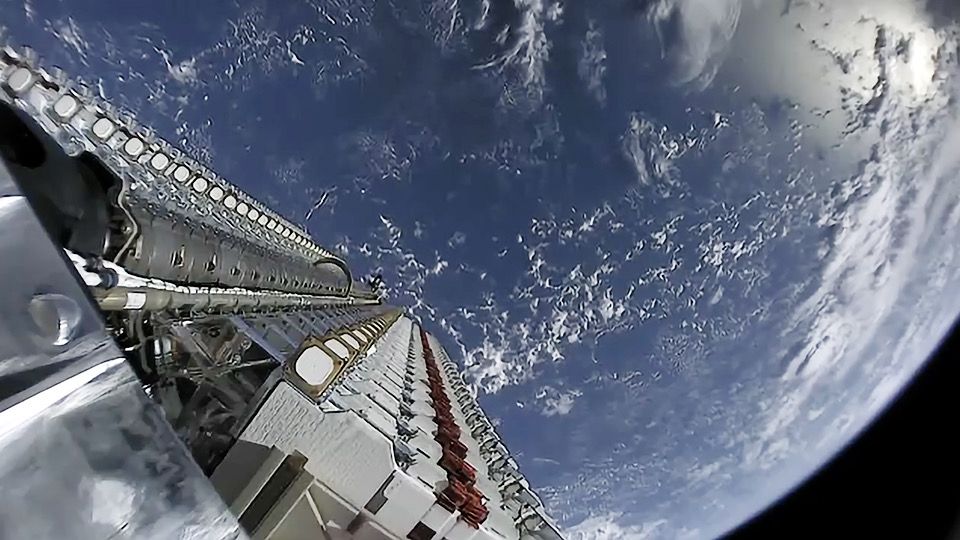SpaceX is once again making headlines with its latest high-stakes Starlink launch, a mission poised to enhance global internet connectivity while offering breathtaking celestial displays and powerful sonic booms. As the aerospace giant continues its relentless pursuit of advancing space technology, this launch is expected to captivate audiences worldwide, particularly those in proximity to the launch and landing sites.
The Starlink Initiative: Bridging the Digital Divide
Starlink, a subsidiary of SpaceX, is an ambitious satellite constellation designed to provide high-speed internet access across the globe, especially in remote and underserved areas. The initiative, spearheaded by Elon Musk, aims to bridge the digital divide by ensuring that even the most isolated regions can connect to the internet with low latency and reliable speeds.
Since its inception, Starlink has successfully deployed thousands of small satellites into low Earth orbit (LEO). This latest launch will add more satellites to the ever-expanding constellation, strengthening coverage and improving service quality.
The Launch Details
Scheduled for liftoff from Kennedy Space Center in Florida, this mission will use a Falcon 9 rocket to transport a new batch of Starlink satellites into orbit. SpaceX has mastered the art of reusability, and the first stage of the Falcon 9 is expected to return to Earth for a controlled landing, producing a series of sonic booms that will be heard across the region.
The launch window remains flexible due to weather conditions and technical assessments, but spectators can expect a dazzling display as the rocket ascends into the sky. The booster’s return to a precise landing zone, either on a drone ship in the Atlantic Ocean or on solid ground, further showcases SpaceX’s prowess in rocketry.
The Science Behind the Sonic Booms
One of the most thrilling aspects of this mission for ground observers will be the unmistakable sonic booms. These loud noises occur when the Falcon 9 booster re-enters the atmosphere at supersonic speeds, breaking the sound barrier. The rapid deceleration creates shockwaves that merge into a powerful sonic boom, reverberating across vast distances.
For those unfamiliar, a sonic boom sounds like a thunderclap and is caused by the pressure difference between the rocket’s leading and trailing edges. While these booms are awe-inspiring for spectators, they are also a testament to SpaceX’s ability to reuse and recover rockets for future missions, significantly reducing launch costs.
Visual Spectacle: Nighttime Launch and Reentry
A nighttime launch of the Falcon 9 carrying Starlink satellites presents an extraordinary visual spectacle. As the rocket climbs through the atmosphere, it leaves behind a luminous trail, illuminating the night sky with streaks of fire and vapor. This phenomenon, often referred to as a “space jellyfish,” occurs due to sunlight reflecting off the rocket’s exhaust plume at high altitudes.
During reentry, the booster’s engines reignite to slow its descent, producing a fiery glow that can be seen for miles. This controlled return is another hallmark of SpaceX’s ingenuity, allowing for multiple uses of the same booster to keep costs down and increase launch frequency.
Why This Launch Matters
Beyond the stunning visuals and sonic booms, this Starlink launch holds significant importance for the future of global connectivity. As SpaceX continues to deploy satellites, Starlink’s internet service becomes more robust, reducing latency and enhancing speed. This development is especially critical for rural and remote regions where traditional broadband infrastructure is costly and difficult to implement.
Furthermore, this mission underscores SpaceX’s commitment to sustainable spaceflight. By perfecting reusable rocket technology, the company is paving the way for cost-effective space exploration, making ambitious projects like Mars colonization and deep-space travel more feasible.
Public and Governmental Reception
The public has shown immense enthusiasm for SpaceX’s achievements, with launch viewings becoming major events for space enthusiasts. However, Starlink has also faced scrutiny, particularly from astronomers concerned about the impact of satellite constellations on night sky observations. SpaceX has been actively working on mitigating these concerns by developing darker coatings and alternative orbital configurations to minimize light pollution.
Government agencies, including NASA and the FCC, have maintained close oversight on Starlink’s expansion. The service has received approvals in multiple countries and is expected to play a crucial role in military communications, emergency response, and rural broadband initiatives.
Looking Ahead: The Future of Starlink
As SpaceX continues to refine its satellite internet service, Starlink is set to expand coverage across new regions, including polar areas and high-demand markets. Future launches will increase the network’s capacity, improving service reliability and affordability.
In addition to consumer services, Starlink has ambitious plans to integrate with mobile networks, provide connectivity for autonomous vehicles, and enhance global maritime and aviation internet access. With competition from other satellite internet providers, such as Amazon’s Project Kuiper, the race for space-based broadband is intensifying, promising innovative advancements in communication technology.
Conclusion
SpaceX’s latest Starlink launch is more than just another satellite deployment; it is a testament to the company’s relentless drive to push the boundaries of technology. From sonic booms that shake the ground to mesmerizing visual displays in the night sky, this mission promises excitement for spectators while advancing the crucial goal of global internet connectivity.
As the countdown to liftoff approaches, anticipation builds for what is sure to be another remarkable milestone in space exploration. Whether you are a casual observer or a space enthusiast, this high-stakes Starlink launch is not to be missed.



